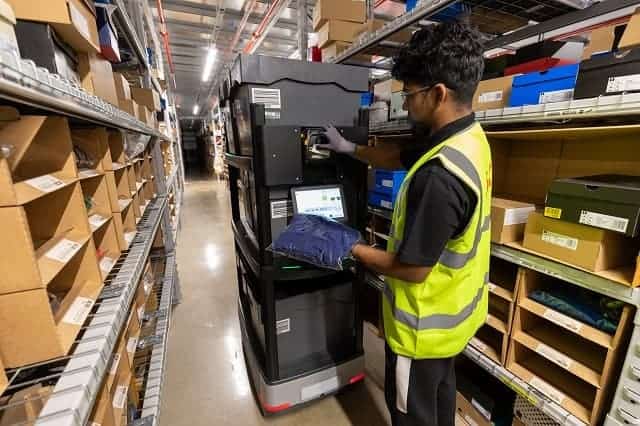In the fast-paced world of e-commerce and retail, returned items are an inevitable part of the business. However, with the right strategies, refurbishing these returned goods can turn a potential loss into a profitable opportunity. This blog post aims to provide supply chain managers, retailers, 3PL inventory managers, and e-commerce businesses with actionable insights to effectively refurbish returned items. By the end of this guide, you’ll be equipped with practical tips, industry examples, and best practices to optimize your returns process and enhance your bottom line.
Understanding the Importance of Refurbishment
Refurbishment is more than just a cost-saving measure; it’s a way to reduce waste and maximize resources. The process involves inspecting, repairing, and restoring returned items to a sellable condition. This not only helps in recouping losses but also contributes to sustainability efforts, as fewer products end up in landfills.
Benefits of Refurbishment
Refurbishing returned items offers several advantages:
- Cost Efficiency: Reducing the costs associated with manufacturing new products.
- Sustainability: Decreasing waste and promoting eco-friendly practices.
- Customer Satisfaction: Offering refurbished items at a lower price point can attract budget-conscious consumers.
Key Statistics
According to a report by Statista, the return delivery costs in the U.S. alone amounted to $550 billion in 2020. Effective refurbishment can significantly cut down these costs, turning returns into a revenue stream.
Initial Inspection and Sorting
The first step in the refurbishment process is a thorough inspection and sorting of returned items. This involves assessing the condition of each product to determine whether it can be refurbished or should be discarded.
Inspection Checkpoints
- Physical Damage: Look for any visible signs of wear and tear.
- Functional Testing: Ensure that the product works as intended.
- Accessories and Packaging: Check for missing parts or damaged packaging.
Sorting Categories
Items can be sorted into three main categories:
- Refurbishable: Items that require minor repairs or cleaning.
- Reusable: Products that are in good condition and can be resold with minimal effort.
- Non-refurbishable: Items that are beyond repair and should be responsibly disposed of.
Efficient Repair and Cleaning Process
Once the items are sorted, the next step is to repair and clean them. This stage is crucial to ensure that refurbished products meet quality standards.
Repair Techniques
- Minor Repairs: Fixing small defects like scratches or dents.
- Component Replacement: Replacing faulty parts to restore functionality.
Cleaning Methods
- Surface Cleaning: Using appropriate cleaning agents to remove dirt and grime.
- Sanitization: Ensuring that the products are hygienic and safe for resale.
Quality Assurance and Testing
Quality assurance is a critical aspect of the refurbishment process. It ensures that the refurbished items meet or exceed the original quality standards.
Testing Procedures
- Functional Tests: Checking all features and functions.
- Durability Tests: Assessing the product’s ability to withstand normal usage.
- Safety Tests: Ensuring that the product is safe for consumer use.
Certification
Obtaining certification from recognized bodies can enhance the credibility of your refurbished products. This can boost consumer confidence and increase sales.
Packaging and Labeling
Proper packaging and labeling are essential to protect refurbished items and provide customers with important information.
Packaging Tips
- Protective Materials: Use bubble wrap, foam inserts, and sturdy boxes.
- Eco-friendly Options: Consider using recycled materials for packaging.
Labeling Essentials
- Condition: Clearly state that the item is refurbished.
- Warranty Information: Include details about any warranties or guarantees.
- Instructions: Provide user manuals and care instructions.
Marketing Refurbished Items
Marketing plays a vital role in selling refurbished items. Highlighting the benefits and value proposition can attract a broad audience.
Targeted Campaigns
- Social Media: Use platforms like Instagram and Facebook to showcase your refurbished products.
- Email Newsletters: Send targeted emails to loyal customers offering special deals on refurbished items.
SEO Strategies
Incorporate relevant keywords like “affordable refurbished electronics” and “high-quality refurbished goods” to improve search engine rankings.
Customer Education and Support
Educating customers about refurbished products can alleviate concerns and build trust.
Educational Content
- Blog Posts: Write articles explaining the refurbishment process and its benefits.
- Videos: Create video tutorials and behind-the-scenes looks at your refurbishment operations.
Customer Support
Offer robust customer support to address any questions or issues related to refurbished items. This can include live chat, FAQs, and dedicated support lines.
Case Studies and Success Stories
Showcasing real-life examples can provide proof of concept and inspire confidence in potential buyers.
Successful Refurbishment Programs
- Example 1: A leading electronics retailer increased its profit margins by 20% through an effective refurbishment program.
- Example 2: An e-commerce giant reduced its return-related waste by 50% by implementing sustainable refurbishment practices.
Customer Testimonials
Share positive feedback from customers who have purchased refurbished items. This can highlight the quality and value of your products.
Leveraging Technology
Utilizing advanced technology can streamline the refurbishment process and improve efficiency.
Inventory Management Systems
Implementing a robust inventory management system can help track returned items, manage stock levels, and automate the sorting process.
AI and Automation
Artificial intelligence and automation can enhance inspection, repair, and quality assurance processes, reducing manual labor and increasing accuracy.
Collaboration with Third-Party Logistics (3PL) Providers
Partnering with third-party logistics providers can optimize the refurbishment process, especially for larger operations.
Benefits of 3PL Collaboration
- Expertise: Leverage the expertise of logistics professionals.
- Scalability: Easily scale operations based on demand.
- Efficiency: Improve turnaround times and reduce costs.
Case Study
A collaboration with a logistics 3PL Memphis provider enabled a mid-sized retailer to double its refurbishment capacity and reduce lead times by 30%.
Sustainability and Corporate Responsibility
Refurbishment aligns with broader sustainability goals, contributing to corporate social responsibility (CSR) initiatives.
Environmental Impact
Reducing waste and conserving resources are key benefits of refurbishment. Highlighting these efforts can enhance your brand’s reputation.
CSR Initiatives
Promote your commitment to sustainability by incorporating refurbishment into your CSR strategy. This can include partnerships with environmental organizations and participation in green certifications.
Measuring Success and Continuous Improvement
Regularly assessing the performance of your refurbishment program is essential for continuous improvement.
Key Performance Indicators (KPIs)
- Return Rate: Monitor the percentage of returned items that are successfully refurbished and resold.
- Customer Satisfaction: Track customer feedback and satisfaction levels with refurbished products.
- Financial Metrics: Analyze the cost savings and revenue generated from refurbished items.
Continuous Improvement
Use data and feedback to identify areas for improvement and implement changes to enhance the refurbishment process.
Refurbishing returned items is a smart strategy for retailers, supply chain managers, and e-commerce businesses looking to maximize profitability and sustainability. By following the steps outlined in this guide, you can transform returns into revenue and contribute to a more eco-friendly business model. Start implementing these strategies today and see the positive impact on your bottom line. For more personalized guidance, consider reaching out to industry experts or consulting with third-party logistics providers
Keep an eye for more news & updates on Verified Zine!



